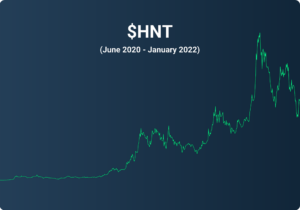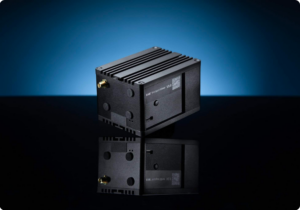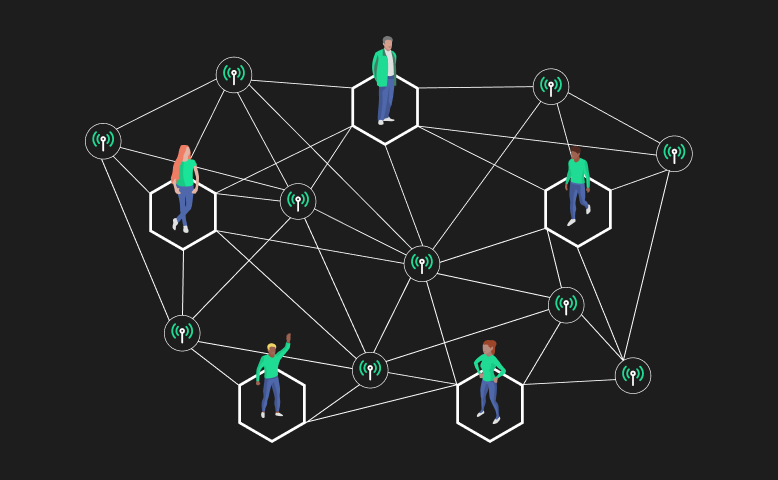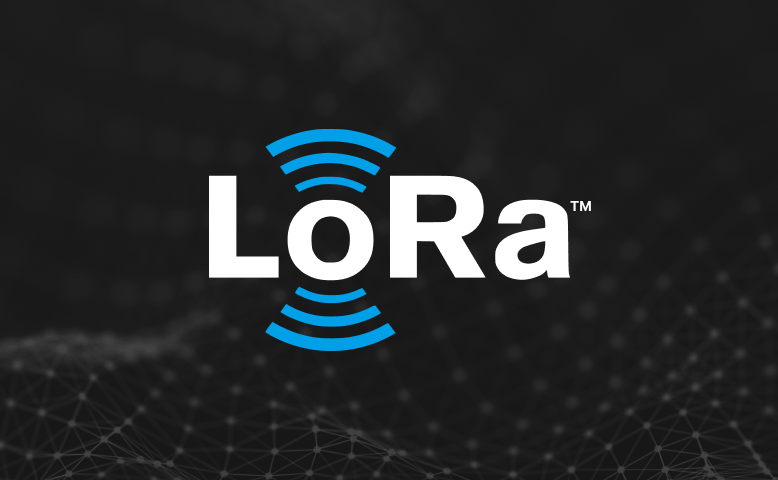
The Helium Network is today’s single most exciting digital project. At least we, at Emrit, think it is. And we do so with good reason: Both as a proof of concept for our distributed infrastructure model, and as an exemplar for how people-driven approaches can expand and grow the blockchain networks of the future, the potential and growing impact of Helium could not be more significant.
If you’ve been following our work for a while, you’ll no doubt have encountered mentions of Helium at every turn. But what exactly is Helium? And what constitutes Helium mining? To understand our company and the success of our recent work, it’s essential to have answers to those questions.
In today’s blog:
- Introduce the decentralized Helium network and its mission
- Explain why now is a great time to start mining Helium
- Explain the role of Emrit and the CoolSpot in the expansion and growth of the Helium Network
The Helium Network
 Helium is “The People’s Network.” Driven by the Helium blockchain and decentralized infrastructure, Helium aims to provide low-power network coverage to billions of devices that need a connection to transmit data between one another.
Helium is “The People’s Network.” Driven by the Helium blockchain and decentralized infrastructure, Helium aims to provide low-power network coverage to billions of devices that need a connection to transmit data between one another.
Helium is powered by Helium hotspots, which transmit low-energy radio signals on the back of existing wireless infrastructure. Individuals who operate a hotspot are rewarded in data credits in the form of HNT (Helium native token). In other words, the network rewards users who mine crypto (HNT rewards) to power the network.
In its current form, the Helium network is an IoT network. IoT stands for Internet of Things and refers to connectivity between non-human interfaces and devices. A smart home, designed around communication between sensors, is a great example of a simple IoT setup.
IoT devices that tap into the Helium network to transmit device data between one another are guaranteed secure information exchange and immutability, thanks to blockchain technologies. That makes the Helium network not only a neat alternative to centralized coverage structures but an essential one. Transferring data has never been safer.
Providing coverage to devices is only the beginning for Helium. The Helium ecosystem is ramping up to include 5G signals as well, providing network coverage to individual users, not just devices.
The Financial Promise of the Helium Network
 Since the beginning of 2021, HNT has already gained around 4000% in value on exchange networks. At the beginning of the year, one HNT was valued at around $1.30. Now, in February, its value has reached around $30. The market cap of Helium has expanded to over $3 billion dollars.
Since the beginning of 2021, HNT has already gained around 4000% in value on exchange networks. At the beginning of the year, one HNT was valued at around $1.30. Now, in February, its value has reached around $30. The market cap of Helium has expanded to over $3 billion dollars.
That’s the kind of indicator that gets investors interested. What can we infer from past performance? Has there been growth, and is the potential of growth high? What kind of financial promise does a network yield at all? And how do we know that Helium will continue increasing in value?
Take a cell carrier like Verizon. Verizon has a market cap of over $220 billion. Of course, Verizon is a household name in the US, with significant cell infrastructure in every state. But even a regional carrier like Spectrum has a market cap of $115 billion.
Unlike both Spectrum and Verizon, Helium is a global network. Its growth potential is incredibly high; if it’s already got a market cap of $3 billion now, in the early stages of its infrastructure rollout, just wait until Helium continues expanding. In fact, Helium is already preparing to build on its IoT coverage and launch an additional decentralized 5G network in the near future.
More than Profit
 Besides its promise and usefulness, the Helium network also embodies the very best of what next-generation digital infrastructure can be. Governed by an open alliance and built on open-source technology, it makes use of already existing technology to reduce cost and raise efficiency in network coverage.
Besides its promise and usefulness, the Helium network also embodies the very best of what next-generation digital infrastructure can be. Governed by an open alliance and built on open-source technology, it makes use of already existing technology to reduce cost and raise efficiency in network coverage.
Blockchain technology demands a people-centered approach. With a network like Helium, centralized, profiteering cell coverage may soon be competitively challenged by a people-powered alternative. At Emrit, we are powering that change.
Helium relies on distributed infrastructure. By connecting an access node to your power and home network, you provide coverage for the Helium network to your local area. Companies like Emrit work to get that infrastructure out to people at a lower cost.
Emrit and the CoolSpot
 Emrit is a distributed blockchain infrastructure company. We aim to build the physical infrastructure of the next generation of the internet, driving mass adoption of Web3 applications that benefit our communities.
Emrit is a distributed blockchain infrastructure company. We aim to build the physical infrastructure of the next generation of the internet, driving mass adoption of Web3 applications that benefit our communities.
Emrit has quickly become a leading deployer of Helium. That amazing development has been fueled by our CoolSpot devices, which have reached thousands of Emritans around the world. The CoolSpot plugs into your power (using only the equivalent energy of a 5W lightbulb) and connects to your home WiFi.
It puts out the IoT wireless signal and passes data on the Helium network and creates/witnesses/responds to challenges for proof of coverage by other nodes in your vicinity. You’ll be earning Helium’s cryptocurrency (HNT) in the process.
Emrit subsidizes half the cost of equipment. You provide your physical location. Mining profits are split 50/50. And while Helium mining won’t remain our only significant infrastructure project, the Helium network will continue growing with Emrit – and you alongside it.
The Potential of Helium
 Helium mining is at the core of Emrit’s first phase of growth. That’s partly because our company’s goals coincide urgently with the infrastructure needs of a system like Helium. By getting subsidized hardware out to individuals all over the world, we are physically laying the groundwork for the expansion of the Helium network.
Helium mining is at the core of Emrit’s first phase of growth. That’s partly because our company’s goals coincide urgently with the infrastructure needs of a system like Helium. By getting subsidized hardware out to individuals all over the world, we are physically laying the groundwork for the expansion of the Helium network.
We are proud to contribute to the growth of the Helium network because it captures the very best of what blockchain technology can do: provide people-driven alternatives to profit-based, centralized networks.
And the Helium network continues to grow and evolve. The IoT compatibility points to further potential for decentralized coverage. Home networks could eventually be used to give coverage to human users as well. In fact, Helium is executing its 5G expansion as we speak.
In this blog, we:
- Introduced the Helium Network and its major parts
- Made the case for getting started with Helium now
- Explained the role of Emrit and the CoolSpot in the successful growth of Helium
To get started on your own helium mining journey (and start earning HNT passively), explore our website and join the ranks of our global Emritans today! Together, we can capitalize on the opportunities of the next digital age.



